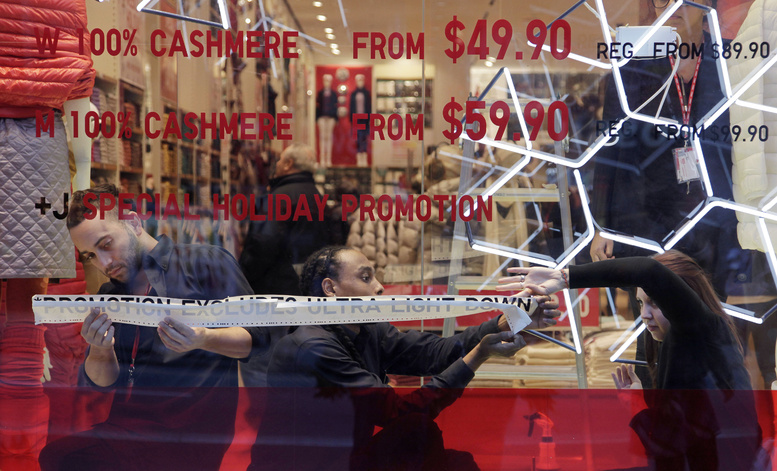Sale, schmale.
Used to be, customers would come running when stores cut prices. But these days, more Americans are becoming blase about bargains.
Jennifer Beasley recently left a Toys R Us in Cary, N.C., unimpressed by the retailer’s offers that day of 50 percent discounts on things like a $150 Sylvania tablet computer and a $45 My Baby Alive Doll.
“The sales just aren’t as good this year,” said Beasley, 30, who has three children. “It’s almost not worth getting up.”
People have been shopping more than ever this holiday season, largely because of a flood of sales.
But Americans have become so used to deep discounts in the weak economy that they expect each sale to be bigger and better than the last. That means retailers will likely have to keep slashing prices, which could hurt their bottom line.
“I think they’re going to have to continue to do the kind of ‘come on’ pricing that you saw on Black Friday,” the day after Thanksgiving, said Alison Paul, head of the U.S. retail practice for the Deloitte consulting firm.
Merchants already are rolling out big holiday sales. The Body Shop is letting customers spin a wheel of chance to win different discounts, including offers of “buy three, get three.” The Gap is selling many of its pajamas, kids’ hoodies and men’s cardigans for 50 percent off. And Target has Barbie, Thomas the Tank Engine and many of its other toy brands for “buy one, get one half off.”
But some shoppers are yawning at deals that once excited them.
“The ads and the sales – I think it’s all hype. There’s no substance,” said Karen Finch of Gresham, Ore., who is waiting to buy a tablet for her son until closer to Christmas Day because she thinks the discounts on Amazon.com – 48 percent off a $500 Blackberry version, for instance – aren’t good enough.
To be sure, consumer perceptions of deals don’t always jibe with reality. Most retailers decline to discuss their pricing strategy because of competitive reasons, but research by analysts at Jefferies & Co. and other firms found that many deals this year are as good as – if not better than – last year’s.
For instance, American Eagle offered 40 percent off everything all day on Black Friday – better than the 20 percent off until noon that it offered for the past two years, according to Jefferies analysts. The average discount at Best Buy on Black Friday was almost 45 percent, up from about 34 percent last year. The average discount at Walmart was about 47 percent, better than last year’s average of 43 percent.
And anyway, what shoppers say and do often are two different things. Consumers told Deloitte in September that they planned to spend about 5 percent less on Christmas this year. But the reality so far is different: Americans spent $52.4 billion over the Thanksgiving holiday weekend, the highest total ever recorded for that period and 16 percent greater than last year, according to the National Retail Federation.
“You can’t always listen to what they say,” said Allen Adamson, managing director at the branding company Landor Associates. “What counts is what they do at checkout.”
Indeed, Atty Zschau of Portland, Ore., has been disappointed with the holiday sales she’s seen so far this year. But instead of going home empty-handed on Black Friday, she shelled out $800 – full price – for a Dell laptop that will be shared among her family.
“We’re normally ‘deal’ people,” said Zschau, an acupuncturist. But “all the stuff that was on sale was not what we wanted.”
Send questions/comments to the editors.



Success. Please wait for the page to reload. If the page does not reload within 5 seconds, please refresh the page.
Enter your email and password to access comments.
Hi, to comment on stories you must . This profile is in addition to your subscription and website login.
Already have a commenting profile? .
Invalid username/password.
Please check your email to confirm and complete your registration.
Only subscribers are eligible to post comments. Please subscribe or login first for digital access. Here’s why.
Use the form below to reset your password. When you've submitted your account email, we will send an email with a reset code.